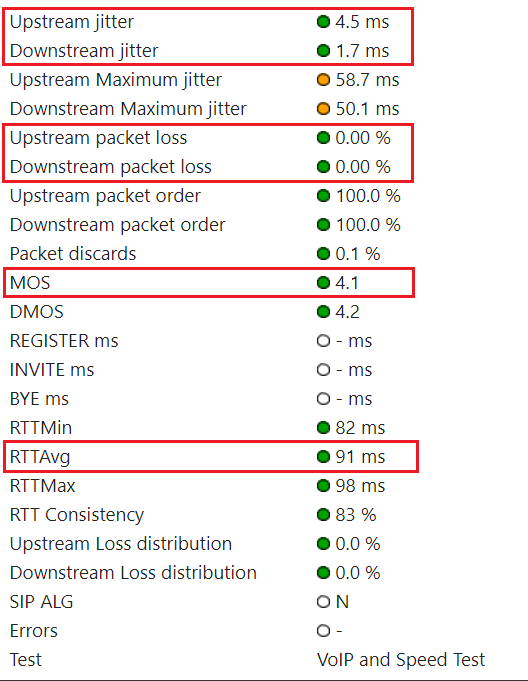VoIP test emulates VoIP calls by using the selected codec and number of lines to provide a Mean Opinion Score (MOS) based on a combination of results. | Info |
|---|
| MOS is a metric to assess the overall quality of a call. |
Objectives: Test: In the VoIP Results section of the email, click the Detailed VoIP Results link. The My Connection Server page appears. In the Summary section on the page, check the values for the aforementioned parameters.
 | Info |
|---|
If you insist that LiveVox pursue the case, the case will be escalated while ensuring that the test result is noted. |
Issue Resolution: If an objective is not met, LiveVox will not escalate the case and will ask you to contact your Internet service provider to identify the cause of the issue. | Info |
|---|
If you insist that LiveVox pursue the case, the case will be escalated while ensuring that the VoIP result is noted. |
| 